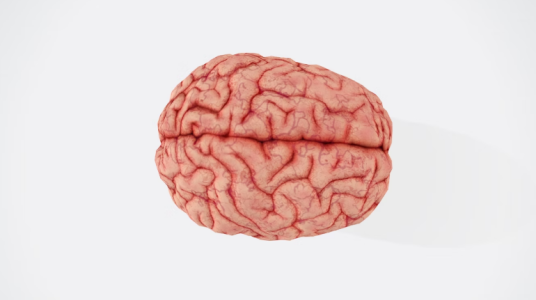Your brain does more than you realize—8 ways it powers your body
- Replies 0
You probably don’t give it much thought, but your brain is behind every breath, step, and thought you take.
It’s your body’s ultimate command center, regulating emotions, storing memories, and solving problems without any conscious effort on your part.
What’s truly fascinating is how much of this incredible work happens quietly in the background, all day and night, without any need for permission or praise.
Let’s pull back the curtain on eight surprising ways your brain keeps the rest of your body running in top form.
1. The “little brain” attached to your brain
Located at the base of your skull, the cerebellum—literally the "little brain"—makes up about one-tenth of your brain’s size yet houses roughly half of its neurons.
While it was once thought to manage only coordination and balance, new research shows it's also involved in mood regulation, language, and abstract thinking.
Some scientists suggest it may function as a general "prediction machine," helping the brain anticipate and adjust to upcoming tasks. This expanded view underscores how the cerebellum supports far more than just physical movement.
2. Your Brain Is an energy hog
Though it accounts for just 2% of total body weight, the brain consumes about 20% of the body’s daily energy needs—even when you're asleep.
Its preferred fuel is glucose, and it burns through approximately 110 to 140 grams each day—around half of the recommended daily carbohydrate intake.
Because it can’t store energy internally, it relies heavily on a continuous supply of glucose and oxygen via blood flow. That’s why interruptions, like a stroke, can cause serious damage within minutes.

3. Kids' brains burn serious energy
In early childhood, brain energy demands are extraordinary, with a five-year-old’s brain consuming up to two-thirds of their resting metabolic energy.
This intense energy use powers critical periods of development and helps explain why young children often stay lean before their adolescent growth spurt.
Researchers have noted a direct link between neurological growth and physical development, suggesting the brain’s caloric needs can shape the body too. These findings highlight the immense metabolic cost of building a growing mind.
4. Your brain can’t feel pain
Despite the sensation of pressure or throbbing during a headache, the brain itself contains no pain receptors.
That discomfort actually originates from nearby tissues, blood vessels, and membranes surrounding the brain.
This unique feature allows surgeons to perform brain operations while patients are awake, using verbal feedback to ensure critical areas like speech and movement regions aren’t damaged. It’s a fascinating reminder that what we feel isn’t always happening where we think it is.
Also read: Using tech could be the brain boost older adults didn’t see coming
5. Peripheral vision shines in the dark
Your retinal structure gives your vision distinctive night-time advantages. Low-light photoreceptor cells called rods are concentrated in your peripheral vision, while cone cells—responsible for fine detail and color—dominate the center.
That’s why faint stars appear brightest when seen out of the corner of your eye, and why peripheral vision can outperform central gaze in dim conditions.
This natural adaptation explains why everything looks clearer at the fringes in low-light situations like nighttime driving.
6. Eyeball shape affects your sight
Proper vision relies on a precise alignment of the eyeball's shape to focus light correctly onto the retina.
When light misses its ideal focal point, refractive errors like nearsightedness or farsightedness result, producing blurred vision.
Temporary measures—such as squinting or using the pinhole trick—can sharpen focus briefly by altering light entry. However, long-term visual clarity typically requires corrective lenses or surgery for permanent results.
Also read: 75-year-old grandfather shares his surprising brain tricks to outsmart dementia—Could these “fun tests” work for you?
7. Your working memory has a limited capacity
Working memory is like your brain’s notepad, holding small bits of information briefly—like a phone number or a to-do list. Most people can hold about seven items at once, though newer research shows this varies and can be more limited than we think.
Unlike long-term memory, working memory is small, short-lived, and declines with age. Brain-training tools like BrainHQ may help improve it, and many Medicare Advantage plans now include access.
8. Your brain never stops growing and changing
Your brain stays adaptable for life, thanks to a process called neuroplasticity. Learning new skills or challenging your mind creates fresh connections between brain cells—even in older age.
These changes boost memory, focus, and overall cognitive health. Programs like BrainHQ support this growth and may already be included in your Medicare Advantage plan.
Read next: Brain health secrets: How to flush out "brain waste" and protect your mind

What other amazing things do you think the brain is hiding from us? Drop your thoughts in the comments and don’t forget to share this with someone who needs a brain boost.
It’s your body’s ultimate command center, regulating emotions, storing memories, and solving problems without any conscious effort on your part.
What’s truly fascinating is how much of this incredible work happens quietly in the background, all day and night, without any need for permission or praise.
Let’s pull back the curtain on eight surprising ways your brain keeps the rest of your body running in top form.
1. The “little brain” attached to your brain
Located at the base of your skull, the cerebellum—literally the "little brain"—makes up about one-tenth of your brain’s size yet houses roughly half of its neurons.
While it was once thought to manage only coordination and balance, new research shows it's also involved in mood regulation, language, and abstract thinking.
Some scientists suggest it may function as a general "prediction machine," helping the brain anticipate and adjust to upcoming tasks. This expanded view underscores how the cerebellum supports far more than just physical movement.
2. Your Brain Is an energy hog
Though it accounts for just 2% of total body weight, the brain consumes about 20% of the body’s daily energy needs—even when you're asleep.
Its preferred fuel is glucose, and it burns through approximately 110 to 140 grams each day—around half of the recommended daily carbohydrate intake.
Because it can’t store energy internally, it relies heavily on a continuous supply of glucose and oxygen via blood flow. That’s why interruptions, like a stroke, can cause serious damage within minutes.

Your brain does more than you realize—8 ways it powers your body. Image source: BUDDHI Kumar SHRESTHA / Unsplash
3. Kids' brains burn serious energy
In early childhood, brain energy demands are extraordinary, with a five-year-old’s brain consuming up to two-thirds of their resting metabolic energy.
This intense energy use powers critical periods of development and helps explain why young children often stay lean before their adolescent growth spurt.
Researchers have noted a direct link between neurological growth and physical development, suggesting the brain’s caloric needs can shape the body too. These findings highlight the immense metabolic cost of building a growing mind.
4. Your brain can’t feel pain
Despite the sensation of pressure or throbbing during a headache, the brain itself contains no pain receptors.
That discomfort actually originates from nearby tissues, blood vessels, and membranes surrounding the brain.
This unique feature allows surgeons to perform brain operations while patients are awake, using verbal feedback to ensure critical areas like speech and movement regions aren’t damaged. It’s a fascinating reminder that what we feel isn’t always happening where we think it is.
Also read: Using tech could be the brain boost older adults didn’t see coming
5. Peripheral vision shines in the dark
Your retinal structure gives your vision distinctive night-time advantages. Low-light photoreceptor cells called rods are concentrated in your peripheral vision, while cone cells—responsible for fine detail and color—dominate the center.
That’s why faint stars appear brightest when seen out of the corner of your eye, and why peripheral vision can outperform central gaze in dim conditions.
This natural adaptation explains why everything looks clearer at the fringes in low-light situations like nighttime driving.
6. Eyeball shape affects your sight
Proper vision relies on a precise alignment of the eyeball's shape to focus light correctly onto the retina.
When light misses its ideal focal point, refractive errors like nearsightedness or farsightedness result, producing blurred vision.
Temporary measures—such as squinting or using the pinhole trick—can sharpen focus briefly by altering light entry. However, long-term visual clarity typically requires corrective lenses or surgery for permanent results.
Also read: 75-year-old grandfather shares his surprising brain tricks to outsmart dementia—Could these “fun tests” work for you?
7. Your working memory has a limited capacity
Working memory is like your brain’s notepad, holding small bits of information briefly—like a phone number or a to-do list. Most people can hold about seven items at once, though newer research shows this varies and can be more limited than we think.
Unlike long-term memory, working memory is small, short-lived, and declines with age. Brain-training tools like BrainHQ may help improve it, and many Medicare Advantage plans now include access.
8. Your brain never stops growing and changing
Your brain stays adaptable for life, thanks to a process called neuroplasticity. Learning new skills or challenging your mind creates fresh connections between brain cells—even in older age.
These changes boost memory, focus, and overall cognitive health. Programs like BrainHQ support this growth and may already be included in your Medicare Advantage plan.
Read next: Brain health secrets: How to flush out "brain waste" and protect your mind
Key Takeaways
- Your brain silently runs most of your body’s systems, using huge amounts of energy and managing everything from balance to emotion.
- It has no pain sensors, consumes more fuel than any other organ, and can trigger full-body responses within seconds.
- Even vision and decision-making depend heavily on how the brain processes light, memory, and bias.
- These eight facts reveal how powerful—and mysterious—your brain truly is.






